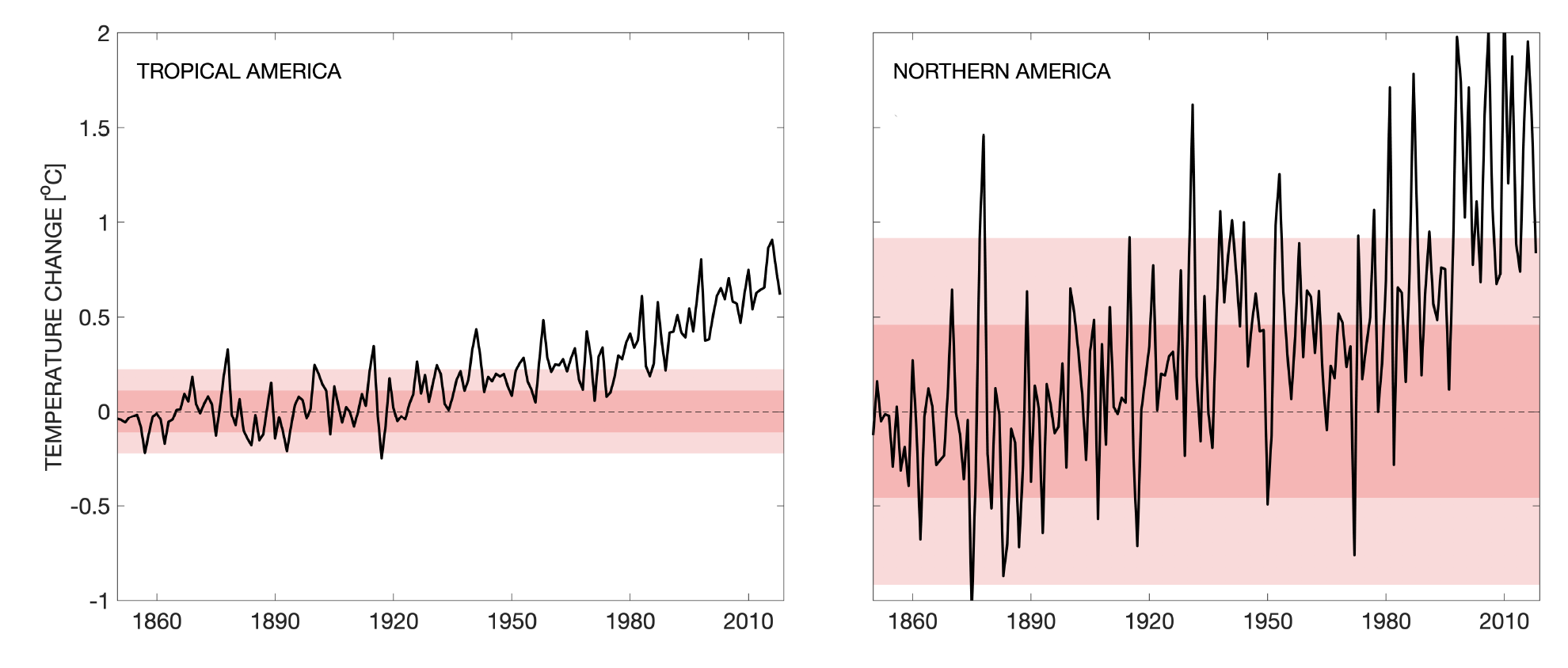Changes in climate are often analysed in terms of trends or differences over time. However, for many impacts requiring adaptation, it is the amplitude of the change (the ‘signal’) relative to the local amplitude of climate variability (the ‘noise’) which is more relevant.
We consider the ‘signal-to-noise’ ratio in observations of local temperature, highlighting that many regions are already experiencing a climate which would be ‘unknown’ by late 19th century standards. The emergence of observed temperature changes over both land and ocean is clearest in tropical regions, in contrast to the regions of largest change which are in the northern extra-tropics.
[Details in: Observed emergence of the climate change signal: from the familiar to the unknown, by Hawkins, Frame, Harrington, Joshi, Rojas & Sutton]
As an illustration, northern America has warmed more than tropical America, but the changes in the tropics are more apparent and have more clearly emerged from the range of historical variability. The year-to-year variations in the higher latitudes have made it harder to distinguish the long-term changes.

This effect is clearly seen when examining maps of the long-term changes (top left), the interannual variability (top right) and the signal-to-noise ratio (bottom). Changes in the tropics have larger S/N values and have more clearly emerged from background fluctuations.

Large areas have a S/N ratio of larger than 5, meaning the new mean climate would only be experienced once every 3 million years in the old climate. For these regions, the observed changes are ‘inconceivable’. Small parts of the North Atlantic show very little change, likely due to a weakening of the ocean circulation in this region.
See the full study for more details and for how these effects appear for precipitation.
Annoying and another clear sign what goes on.
Most big companies or organisations have strategies in place to get climate neutral until a certain year. I assume this is not the end. We will need a lot of climate negative contributors.
Very interesting approach. Can we extend this idea to other variables like winds?